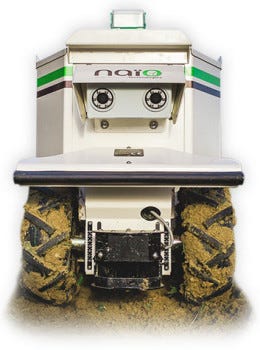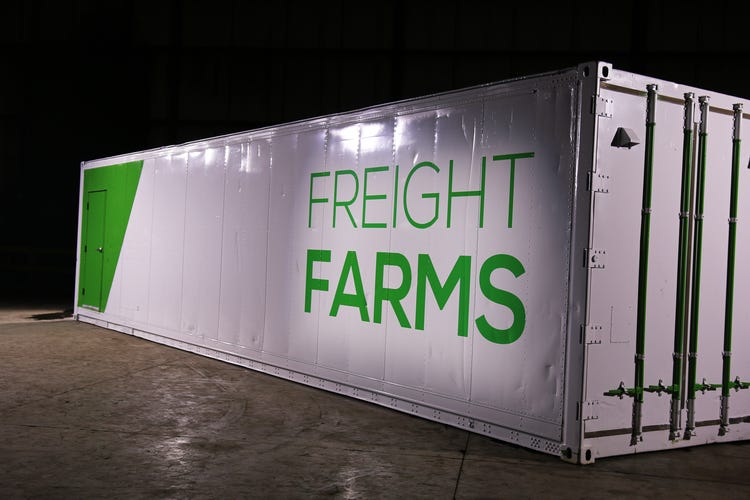AgTech - Not Just For Large Farms?
AgTech - Not Just For Large Farms?
- Last Updated: December 2, 2024
Bryan Eagle
- Last Updated: December 2, 2024



A lot of the press and attention in the AgTech space lately has been on technologies for large farms. Systems like GPS-controlled tractors that can plant and harvest row crops virtually unattended. Large-scale irrigation management platforms that include satellite imagery and drones to let you know when and where to water. These technologies are making big differences for large farms to reduce costs and improve yields.
Arable land is decreasing, fresh water supplies are becoming more scarce, and climate change is affecting the stability of crop production. What can IoT do to help?
These technologies are extremely important because, according to the Food and Agriculture Organization of the United Nations (FAO), between now and 2050 we’re going to have to increase production in the US by 70% to feed ourselves. Arable land is decreasing, freshwater supplies are becoming more scarce, and climate change is affecting the stability of crop production.
The Growth of Small Farms
Roughly 1.9 million of the nation’s 2.1 million farms are small in terms of sales, averaging less than $350,000 annually. The total number of harvested acreage in the US has been decreasing over time, but there was a small uptick of roughly 5,000,000 acres in 2016. Most of this is thought to be a result of the growth in the number of new small farms.
There are a number of factors driving the growth of small farms. The demand for fresh, higher-quality foods in the farm to table movement; the increase in demand for organic produce; and the increase in farmers' markets. From 2008 to 2015, farmers' markets grew by over 80% to over 8,400 markets.
While there seems to be a bit of positive growth, hurdles remain.
“The top three problems I see being an issue for small farms is access to market (this is why regional food hubs play such an important role), securing land, and the fact that governmental subsidies in the U.S. are geared towards supporting large monoculture, monopolized farms.”i
— Emily Breslin, Community Manager at THRIVE, an Agtech accelerator
What technology do these small farmers need?
“The economies of scale necessary to be profitable in the production of farm commodities work against the small farmer. This can be addressed in two ways: increasing the efficiency of the production and diversifying what is produced in order to differentiate from low margin commodities. AgTech can help in both of these.”
— Pete Nelson, Vice President of Agriculture Innovation, an accelerator of new innovations in food and agriculture
These technologies can be broken down into, field monitoring, equipment telematics, livestock biometrics, and market access. I’ll now examine each of these technologies and explore their efficacy for small farms.
Field Monitoring—ROI Isn’t There Yet
The smart automated farm of the future relies heavily on real-time input from field sensors to control pests and to determine proper water and nutrient cycles. These systems have shown that they can reduce water use and improve yields.
Several players have built systems for large scale farms, including PureSense, Hortau, CropX, John Deere Water and others. The larger farms have the scale and margins to afford systems like these, however, many of these are too expensive for smaller farms.
The cost to purchase and implement these systems is prohibitive. The return on investment (ROI) just isn’t there for the small farmer. Fortunately, several home-based irrigation systems are working on less expensive sensor technology that can be married with drip irrigation systems, leading to more attractive prices for small farmers.
One area that’s seen a rush of new entrants is the use of drones to monitor crops. The economics of drone technologies are yet to be determined, but the 5-acre farmer has less trouble visualizing their crops and would, therefore, be less likely to embrace this without a compelling ROI.
Equipment Telematics—Smaller Machines Needed
While tractor telematics are traditionally the mainstay of large operations, smaller-scaled versions of the same systems are needed for the smaller farms.
Harvesting remains one of the most costly parts of farming. In a 2014 report, ResearchMoz projected the agricultural robot market size to grow from $817 million to $16.3 billion by 2020. Robotic harvesting could help to reduce these costs if they can be scaled to smaller firms.

(Image Credit: Naio Technologies) OZ Weeding Robot
One company working on this is Naio Technologies with their OZ weeding robot. Another company, Rowbot, makes a lawn-mower sized robot that can fertilize, mulch, weed, and sow 50 acres of crops per day. While this isn’t geared to the smaller farmer, Rowbot’s founder Kent Cavender-Bares said on a recent podcast, “When we think about the future in ten years, we’re going to see smaller machines rather than big ones.”
Livestock Biometrics — Promising Technologies
Tracking when and where your farm animals are, as well as the status of their health, is important to improving yields. New light systems in hen houses and Fitbit-like devices for cows are currently being tested.
Cowlar is a smart non-invasive neck collar that monitors temperature, activity, and behavior of each individual cow and then provides recommendations to help improve production and reduce costs.
HerdDogg builds state-of-the-art smart ear tags and readers for livestock ID and health monitoring.
Coopboss is a chicken coop management system for the small producer.
Market Access — Online Marketplaces Needed
Small farmers are taking greater advantage of trends like the Farm to Table movement and the rapid growth in farmers' markets, but these are still relatively small scale and can’t always consume a farm's total production.
What’s still needed is better online market places for connecting small farmers with consumers. These marketplaces could provide the bridge for farmers to offer the day’s (or the week’s) production to a variety of consumers, be they restaurants, individual consumers or even specialty distributors or aggregators.
Community-supported agriculture (CSA) systems, which can help provide a market for local producers, are gaining ground in many parts of the country. Providers like From the Farmer and Green Grocer in the Washington DC area and Good Eggs in San Francisco are bundling foods from multiple farms into weekly deliveries of that week’s harvests. Because these foods are grown locally, they can be harvested for peak taste and quickly delivered to your door.
AgTech - Looking to the Future
Perhaps one of the more interesting future technologies for the small farmer vertical farming, which can offset the seasonality of farm production. Companies like Freight Farms and others are converting old 40 foot, freight containers into modern, highly automated, hydroponic systems that can grow crops year-round.

Image credit: Trifecta Ecosystems
While most of the products being grown in these facilities are fast-growing leafy greens and high-value herbs, research is being done on growing a wide variety of crops. On a revenue-per-square foot basis, these have to be some of the highest margin activities for a farmer.
The Most Comprehensive IoT Newsletter for Enterprises
Showcasing the highest-quality content, resources, news, and insights from the world of the Internet of Things. Subscribe to remain informed and up-to-date.
New Podcast Episode

What is Software-Defined Connectivity?
Related Articles




